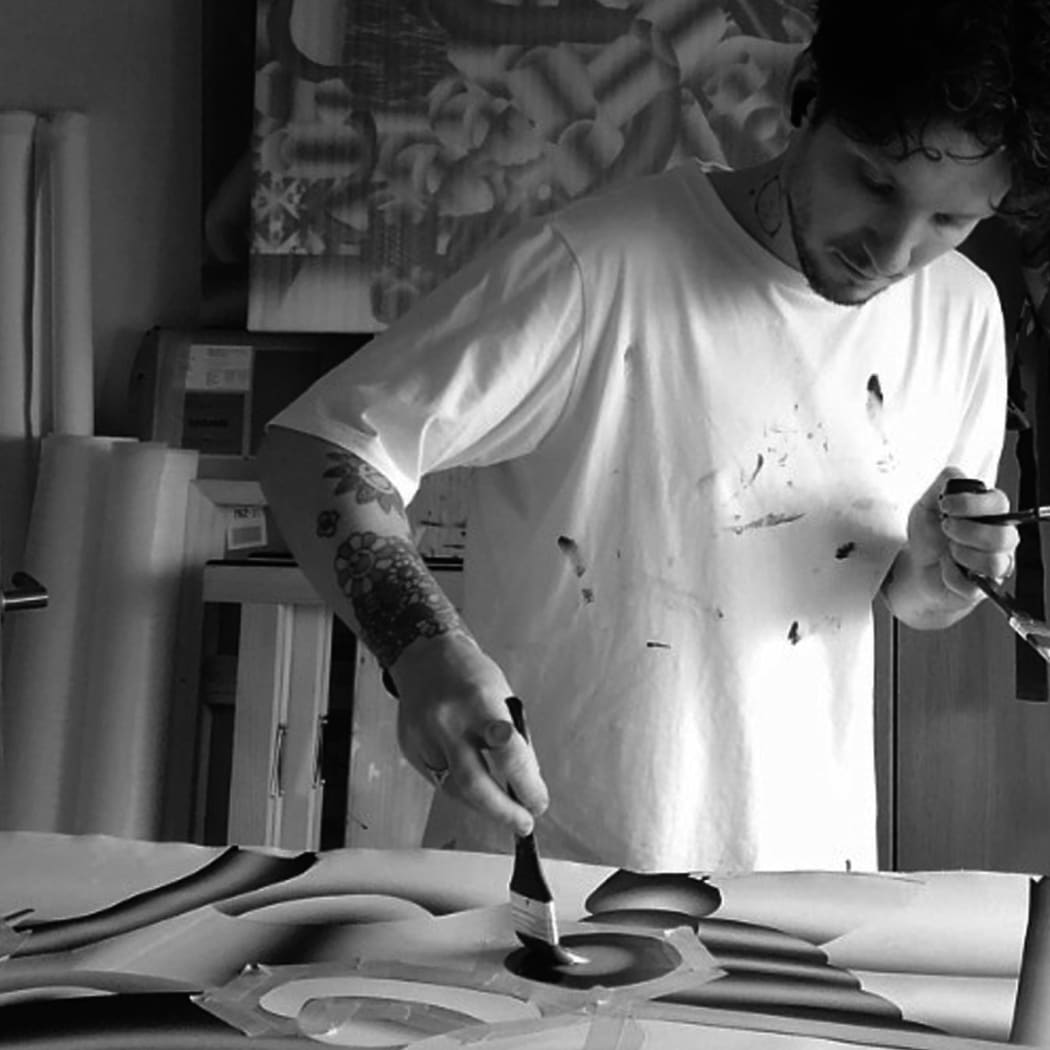
Whilst in London for his first show 'Tokyoverse' with StolenSpace, we took the opportunity to ask Geoffrey a few questions about his working practice and new body of work.
How has living and working in Japan influenced your life and artistic practice?
I arrived in Japan when I was 21 years old. Since then, this country has deeply influenced my life and artistic practice. I have developed here, and the impact on my work is significant. I now consider myself more of a Japanese artist than French. My style is a blend of manga and the graphic style characteristic of contemporary Japanese painting. Takashi Murakami pioneered the "superflat" movement, where the painting is very flat, almost as if it were printed. My works exhibit this characteristic: they are very flat, without traces of brushstrokes. My black and white style also references manga pages, which are almost exclusively in black and white.

What does your creative process look like when conceptualising new pieces?
When I conceive a new piece, I primarily focus on the overall composition. Finding a delicate balance is essential, regardless of the subject matter. I always start with a quick sketch, which I then rework several times until I achieve the desired result. As my work is almost always in black and white, line prevails over color; that's the aspect I primarily focus on. Then, I adopt a very minimalist approach. I work in a restricted space, which forces me to use few materials. I only need a few brushes, my pot of black and white, and that's it!

Who have been your biggest influences when developing your artistic language?
This question is complex because I'm passionate about art and artists in general. I'm familiar with the biographies of artists, mainly from the 20th century. Therefore, they have all, in one way or another, influenced my work. Without going into too much detail, I can mention two who have particularly influenced my practice: Fernand Léger and Tomoo Gokita (one French and one Japanese!). Fernand Léger inspired me with the structured aspect of his forms and his "cylindrical" style, elements that are also present in my works. As for Tomoo Gokita, his strong use of contrast in his black and white paintings, as well as the way he manipulates light in his works, have been crucial aspects for me in my paintings in recent years.

For ‘Tokyoverse’ you aimed for a much more focused approach by removing context and backgrounds. What led you to this decision?
I already partially answered this in the previous question, haha. However, there is another reason why I removed the background. Some time ago, my works were very complex, with very anarchic shapes where the subject often got lost in the background. It was difficult to distinguish the central character from the rest, which sometimes gave the impression of an abstract painting if one didn't pay attention. With "Tokyoverse," I am clearly paying homage to contemporary Japanese painting. I highlight female portraits in a clean and graphic style. So, I would conclude with the idea that "Less is More"

Enquire here to request details of available works by Scott
